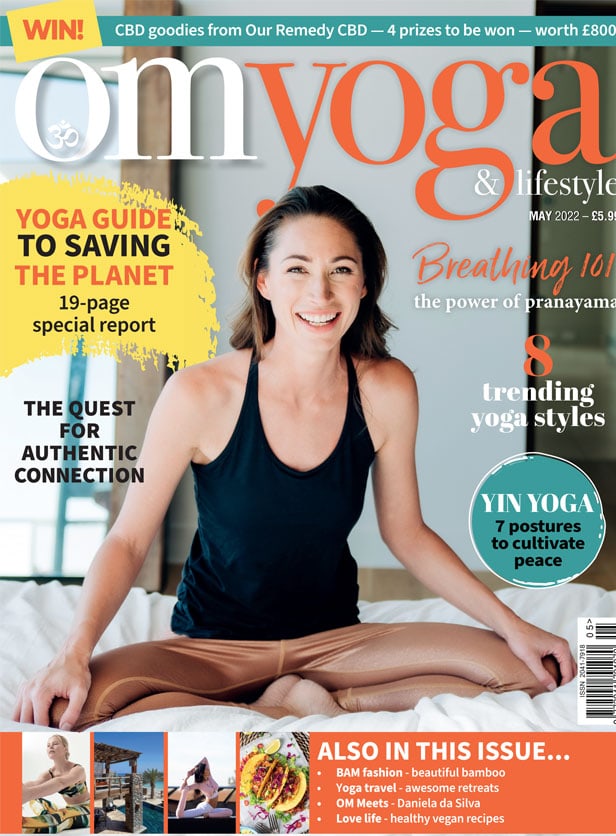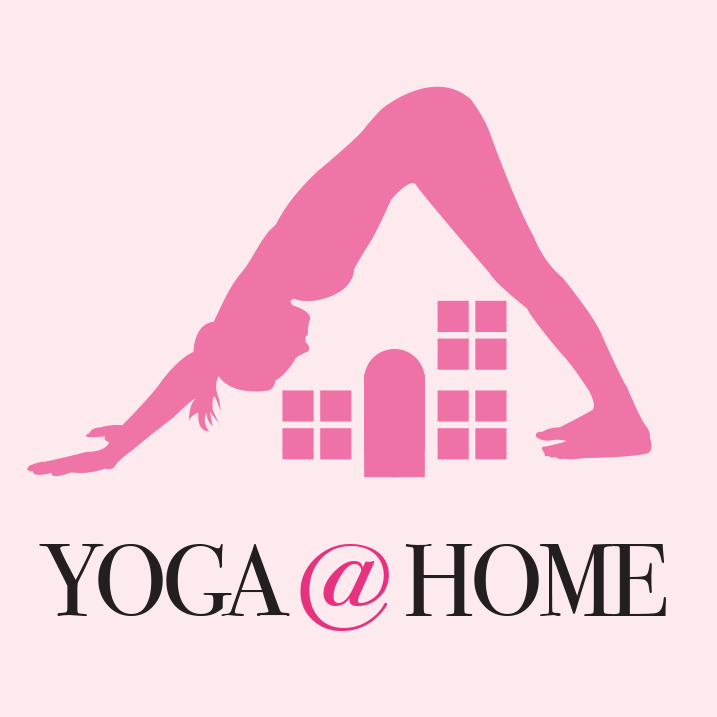
Yin Yoga: 7 postures to cultivate peace
Cultivating peace with Yin Yoga: a soothing practice with Bhavisha Pankhania. Words: Laura Dodd
With so much stimulation and pressure from the external world, then add into that our own internal, mental ‘noise’ of excessive thinking, strategising, worry and busy lives full of ‘doing’, we can be drawn so far away from the present moment that we are left feeling off-centre and in a state of disharmony.
Yin Yoga can be the antidote to this ‘yang’ of the world, by easing our minds into a more meditative state of stillness, engaging the parasympathetic nervous system, and allowing ourselves just to be. This Yin sequence will calm the mind and help improve sustainable flexibility and mobility by releasing the fascia in the hip, groin and lower back areas.
Move slowly through the following postures, holding each pose for around 3 minutes, to cultivate peace. Move with ease and intention, noticing what comes up for you, making sure to stay connected to a calm breath and listen to your body in each posture. For comfort and support you could have a yoga block, a bolster, warm clothes and blankets.
Watch the mini sequence with Bhavisha Pankhania on the OM website or app, brought to you in partnership with The Yoga Class
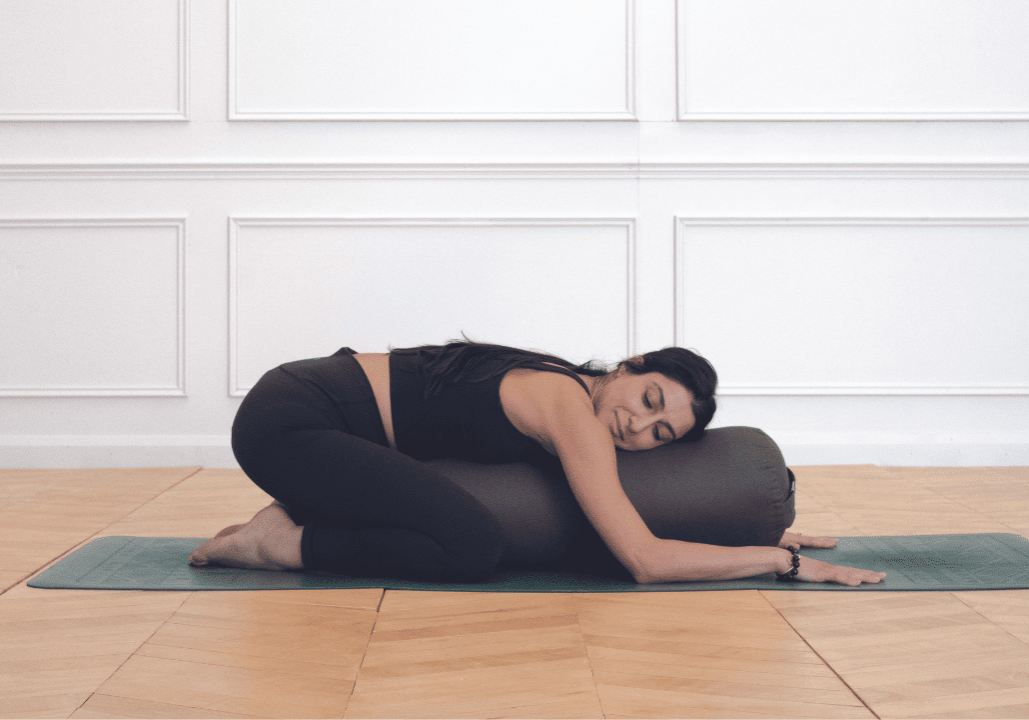
1. Wide Child Pose (Prasarita Balasana)
Come to kneel on the yoga mat with your knees wide and your feet towards each other. Allow the hips to soften down towards the feet as you gently draw your chest, forehead or cheek towards the mat or your bolster. Feel space across the back of the pelvis and lower back, as you soften towards the mat. Possible variations are bringing the arms forward, letting the arms rest backwards to the sides of the hips or through the legs, or finally bring them to rest on a bolster. Soften in mindfully to this pose for around 3 minutes before exiting the posture slowly, carefully and with ease. Anchor your mind on a calm and conscious breath, hold for as long as you need.
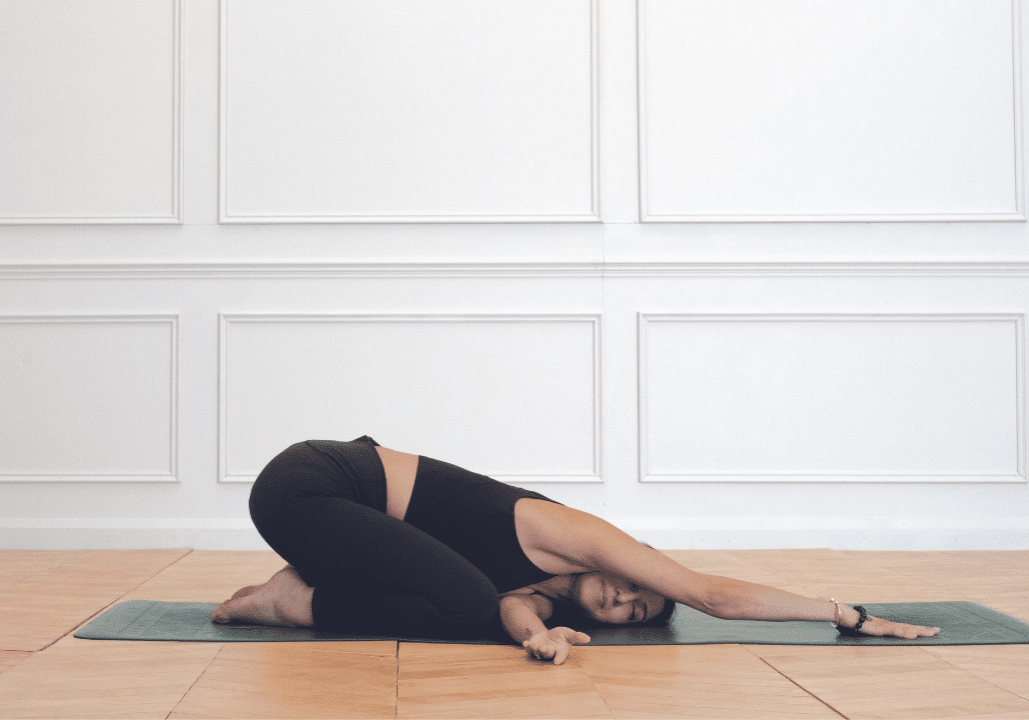
2. Revolved Wide Child Pose (Parivrtta Prasarita Balasana)
From Wide Child Pose, lift the chest. Twist to the left with your right arm outstretched across the front of the chest and drawing the right shoulder and side of the cheek to the mat. Possible variations are to bring the left arm forward or around the lower back to the right hip crease. Modify by using a bolster under the chest if necessary. Hold for 3 minutes before exiting the posture gently and repeat on the other side.
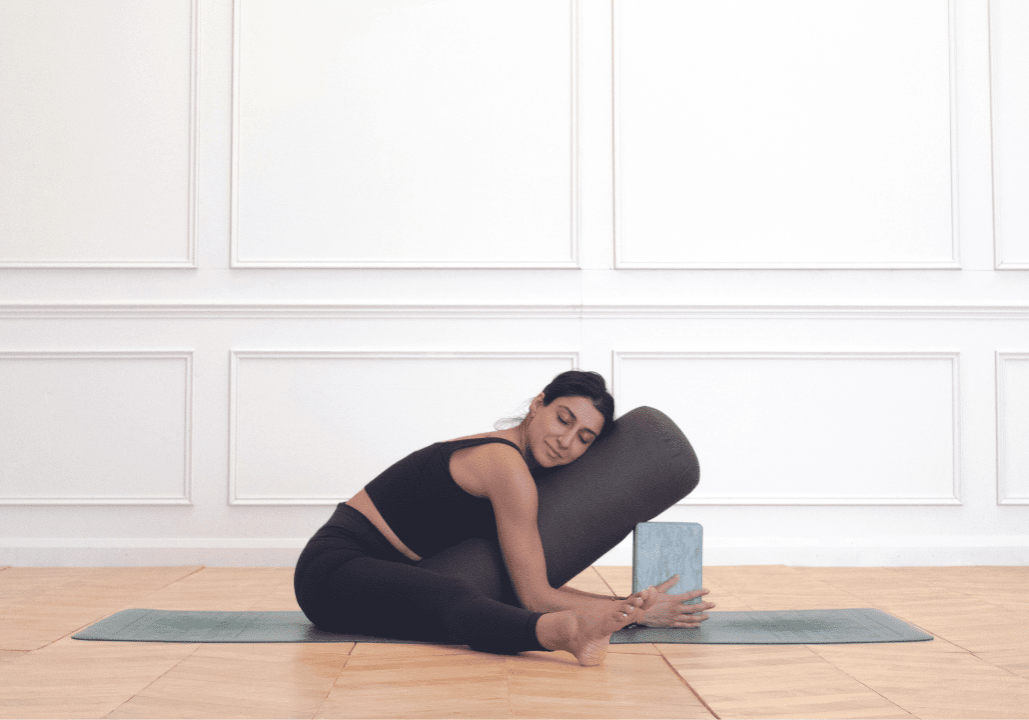
3. Dragonfly Pose (Upavista Konasana)
Slowly come to sit on the mat, spread your legs as wide as feels comfortable, allowing the pelvis to find an anterior, forward, rotation. Keeping length in the spine ease the chest towards the mat, either bringing the forearms or hands to the mat, the chest and cheek to a bolster, or to a block and bolster combination. Further modification options include a block or rolled up blanket under the sit bones and slightly bent knees or rolled blankets under the knees. Listen to your body, soften and allow yourself to just be for 3 minutes. Exit the pose steadily.
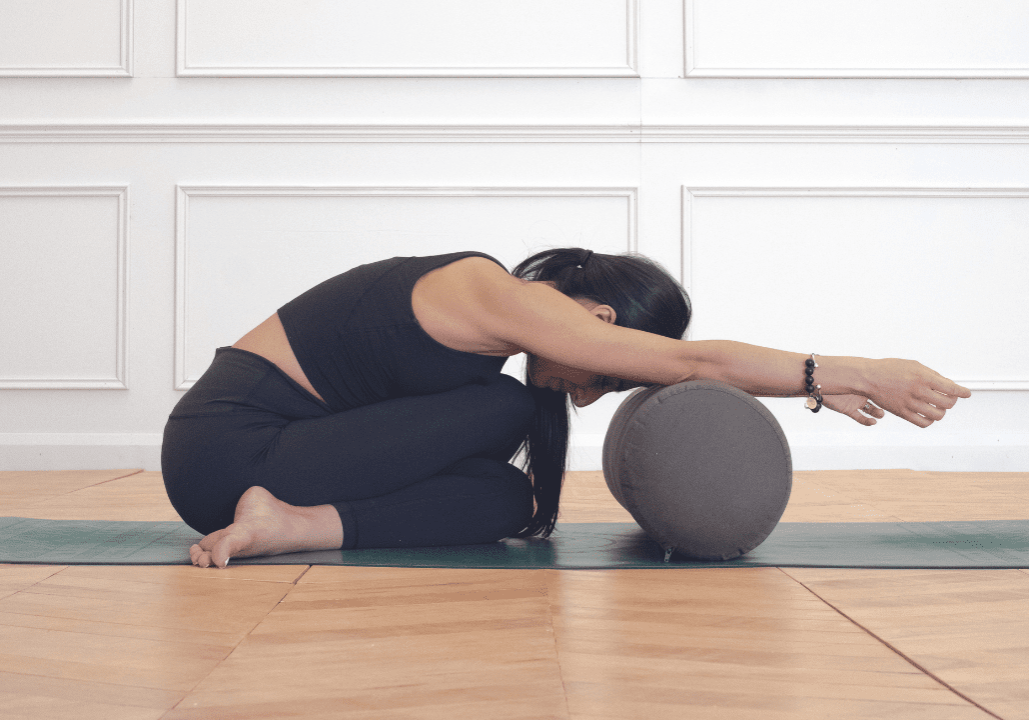
4. Shoe Lace Pose (Gomukhasana)
Come back to seated with both legs together and straight out in front of you, cross the right leg over the left so that your knees are stacked, and the right foot draws in towards the left hip. Then bring the left foot close to the right hip. Variations include leaving the lower leg extended down the mat (Half Shoelace Pose), as this may be deep enough. Keeping an anterior rotation of the pelvis, either leave the torso upright or fold the chest down bringing the arms to rest on the mat or onto a bolster. Possible modifications include a block or rolled blanket under the sit bones or a rolled blanket between the knees. There shouldn’t be any pain in the knees, use eye of the needle as an alternative if you feel any knee pain. Breathe here for 3 minutes. Carefully unravel and repeat on the other side.
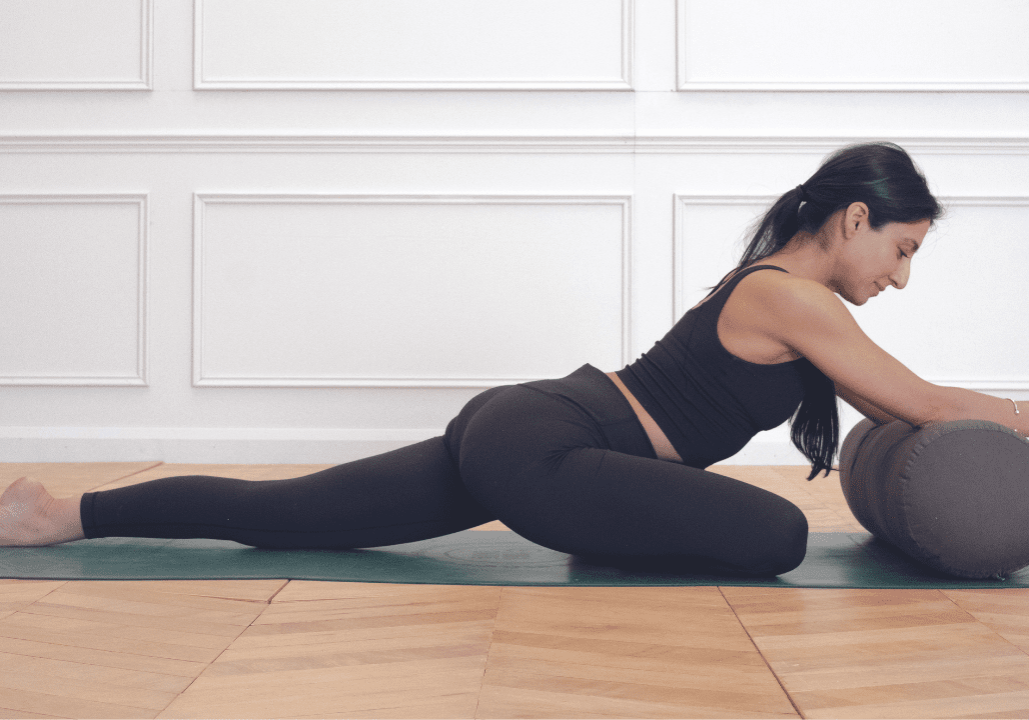
5. Sleeping Swan Pose (Eka Pada Rajakpotasana)
From Down Dog pose slowly draw your right knee across towards your right wrist, bringing the shin, knee and pelvis to the mat. Make sure you don’t feel any discomfort in the front knee and find a position for the front shin that works for you. The front shin should be at a maximum of parallel with the front edge of your mat. The left leg is straight out behind you. Keeping the spine long fold forwards onto the hands, forearms, or bring the forearms or forehead to a bolster. Try to keep the weight evenly distributed between both sides of the pelvis, using a bolster or rolled blanket under the left hip if needed. Stay for 3 minutes before drawing yourself gently out of the pose to repeat on the other side.
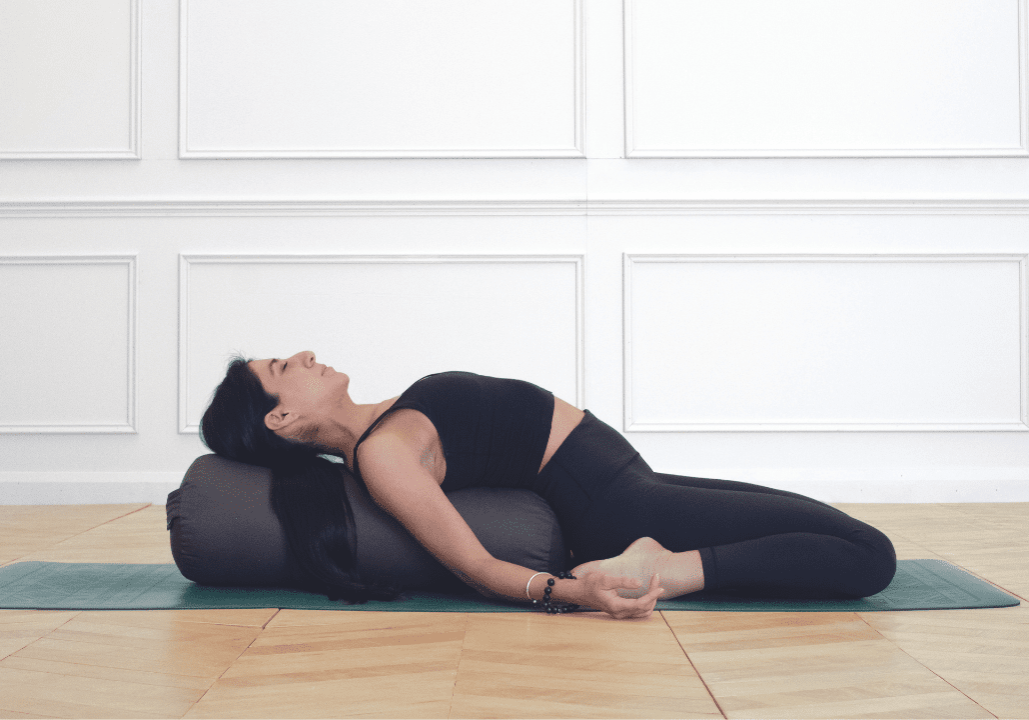
6. Saddle Pose (Supta Virasana)
Come to kneeling on the mat with the knees together and the feet apart slightly. Gently lower down your seat in between your feet so your thighs and tops of the feet are on the floor. A possible modification to make the pose less intense, is to bring the hips to blocks or blankets. Start to ease back, lowering the body towards the mat, either bringing the forearms to the mat, the torso and head to the mat or to your bolster. You shouldn’t feel any pain in the knees here. Stay with the breath in this posture for 3 minutes. Exit steadily and carefully.
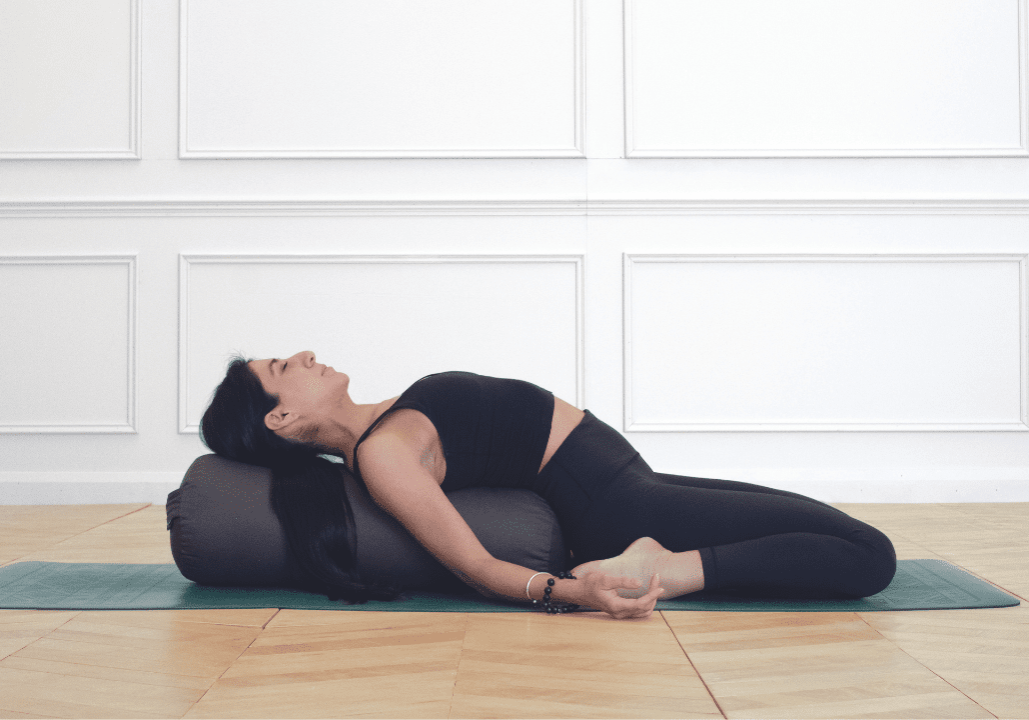
7. Lying Spinal Twist Pose (Supta Matsyendrasana)
Lie on the floor with the knees bent and the arms out to the sides. Draw the knees into the chest before allowing the knees to drop to the left, keeping the right side of your upper back and shoulder weighted towards the floor. Find a position with the knees that feels right for you. Variations include keeping the bottom leg straight or bringing the legs to double wrap. Feel free to bring a bolster under the knees or a bolster or blanket between the knees. Stay mindfully for 3 minutes, before unravelling carefully and repeat on the other side.



